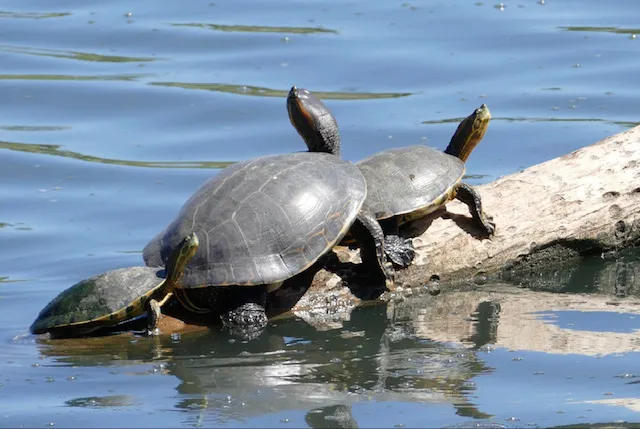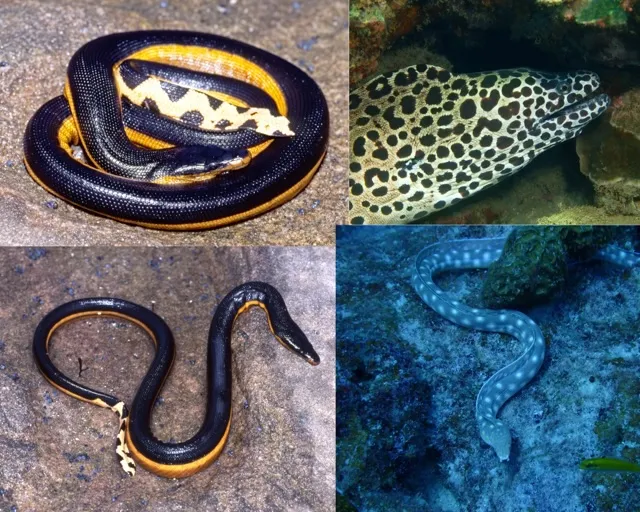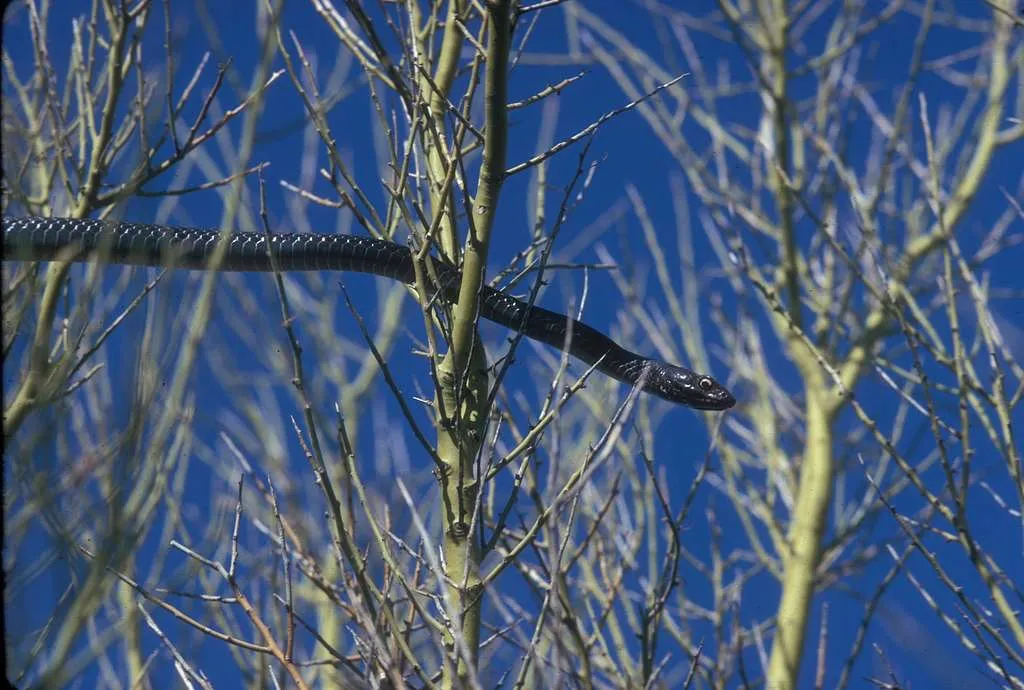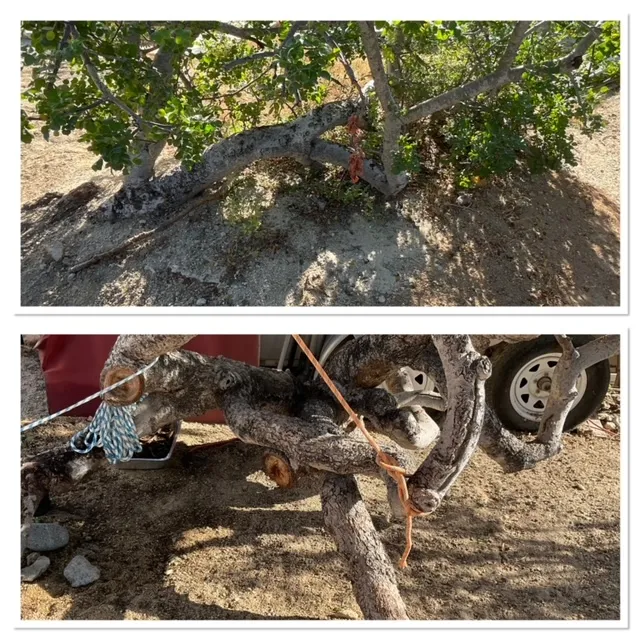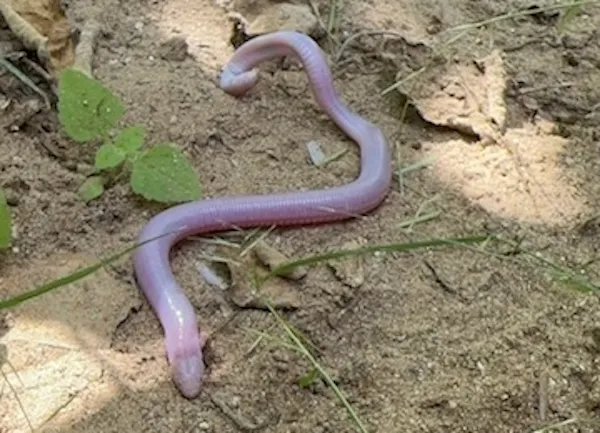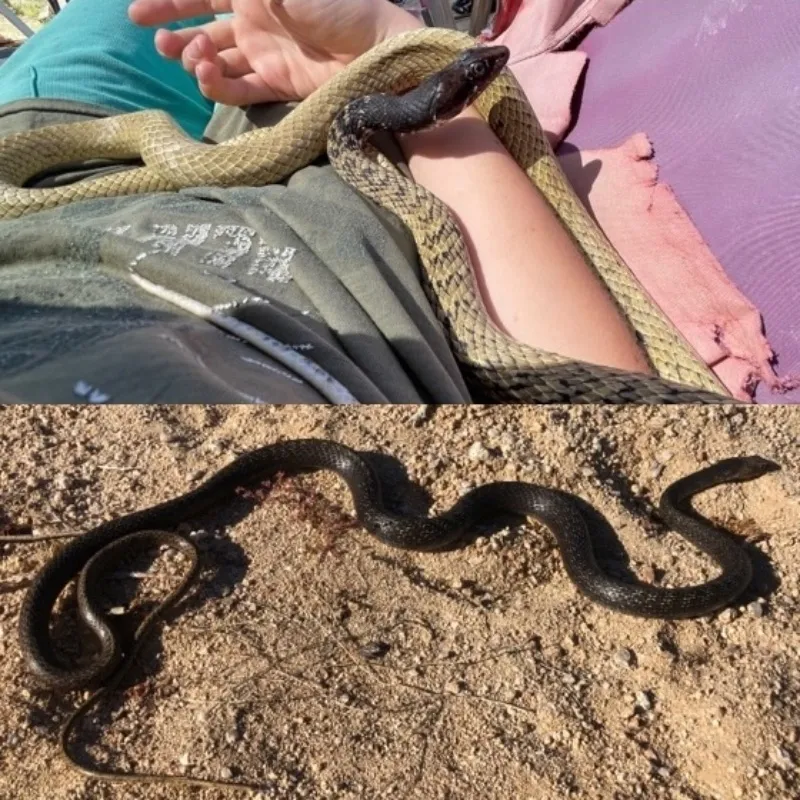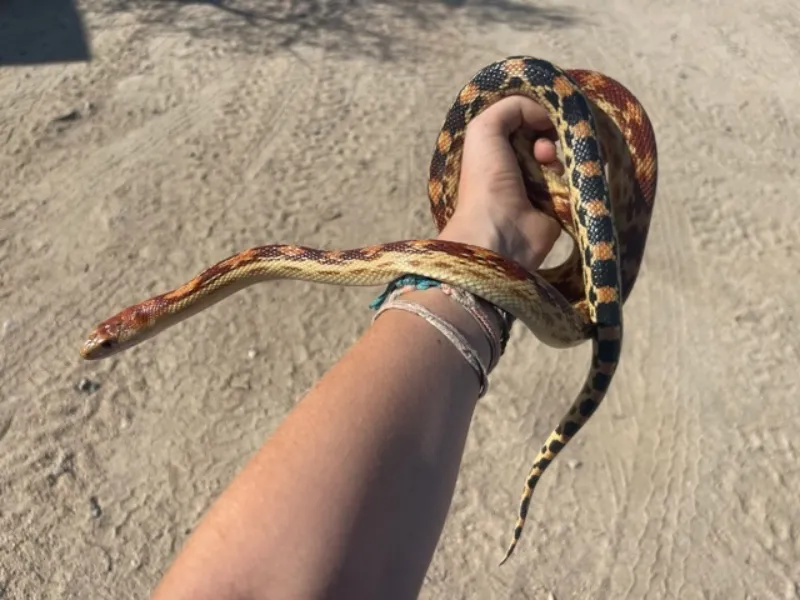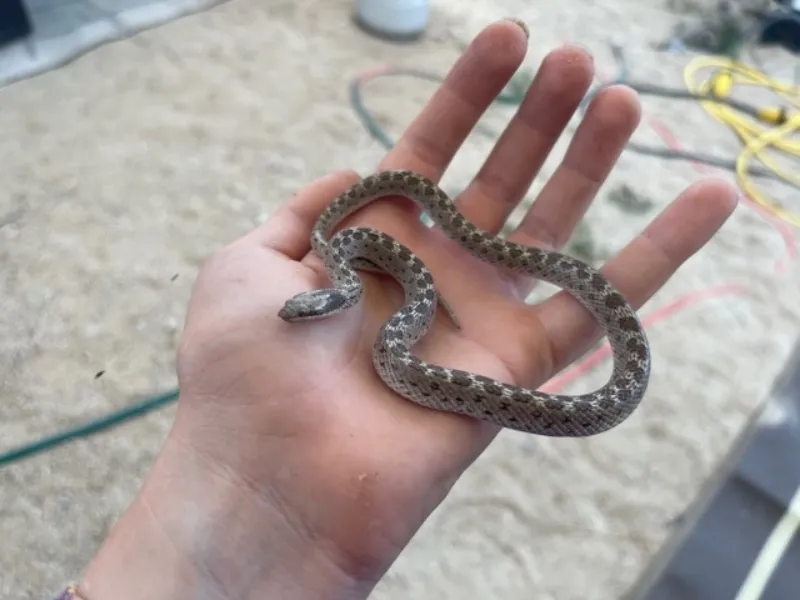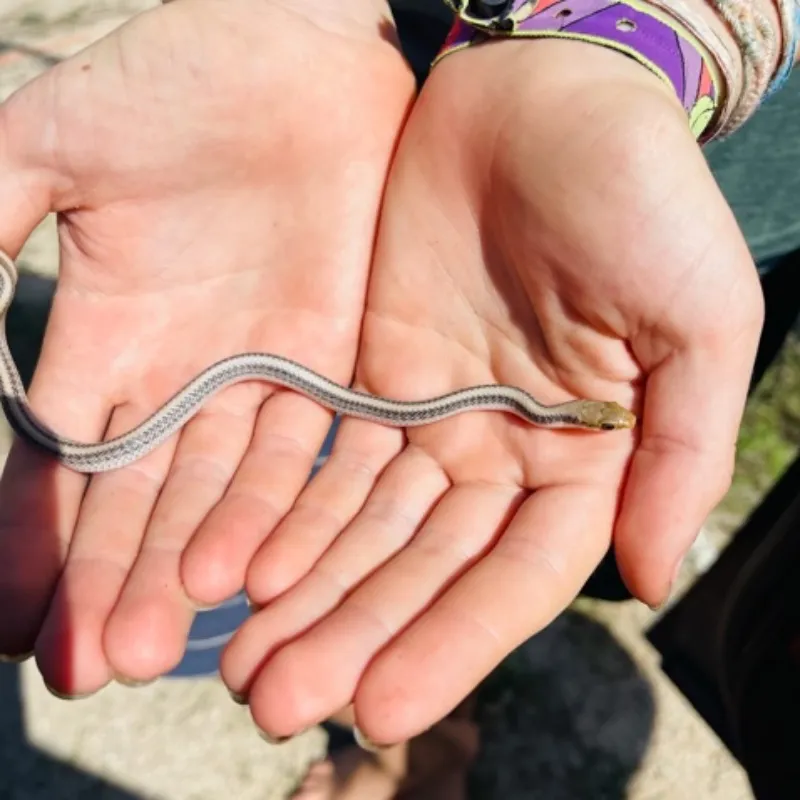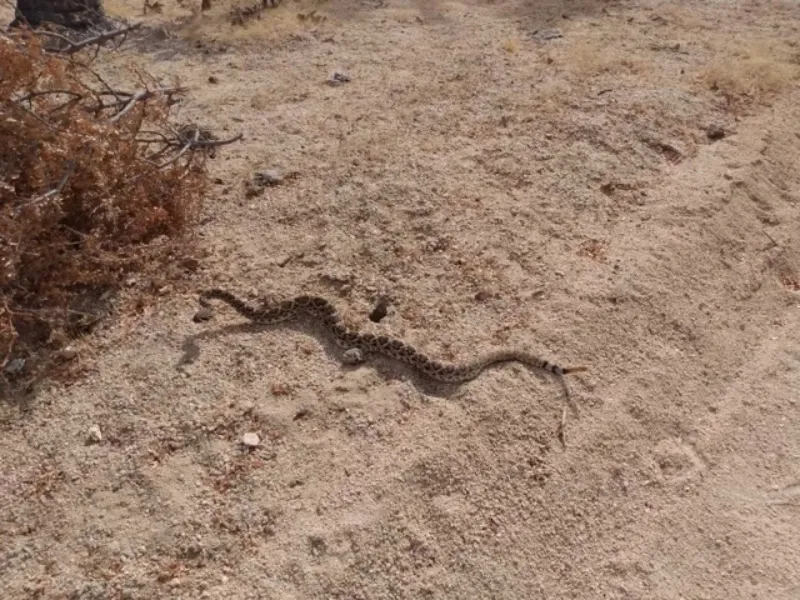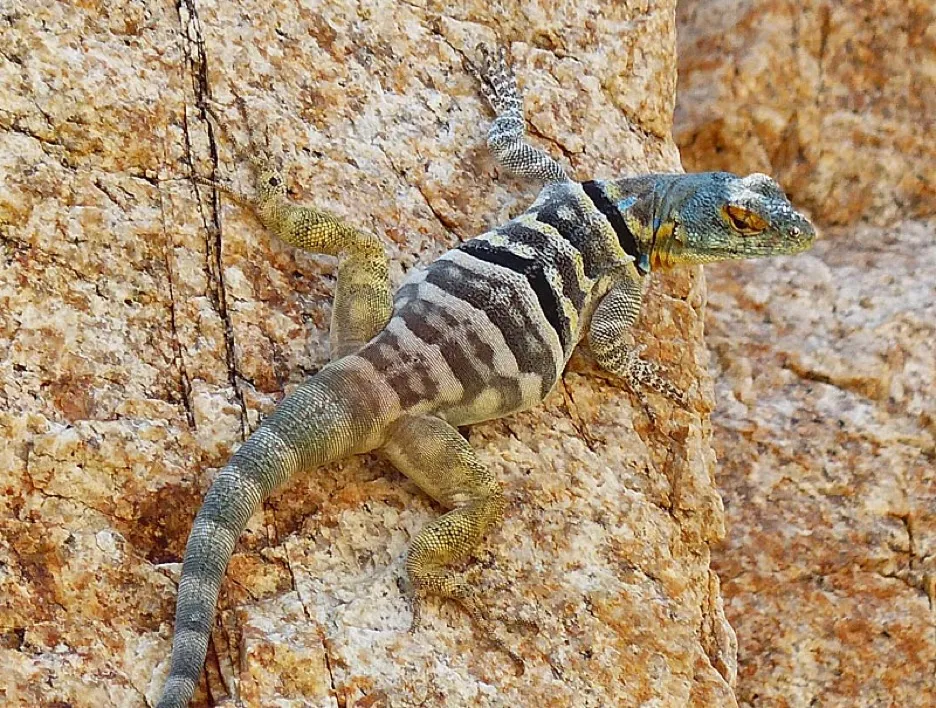
We have made it into March! You know the old saying: March comes in like a lamb, and goes out like a lion. Well, as far as reptiles are concerned, it is very accurate! We are on the fringe of the reptile breeding season and, as temperatures warm, the snakes really start coming out. Be careful on the bike trails because, yes, there are rattlesnakes, but I mostly watch out for snakes crossing trails, since many get run over by cyclists.
On Saturday, I came across a large snake track crossing a dirt road and followed it towards a large bush. After checking the bush, I continued in the direction the snake had been moving and, to my surprise and delight, there was a large Baja California Coachwhip sprawled out in some old palm husks. Finding coachwhips is the easy part; catching them, however, is an entirely different matter.
I crept up and the snake recoiled under a husk. As I got closer, it seemed the snake had nowhere to go, so I quickly lifted the husk only to see the tail disappearing into an adjacent bush. I raced around to the other side of the bush trying to spot it. A movement caught my eye from across the clearing. It was the coachwhip! Apparently, it had teleported across the clearing. I watched as it smugly slithered into a brush pile and knew that I had been defeated.
Spring Reptile Walks! Our next walk will start at the Las Palmas Trailhead, north of town. At 9am on Friday, March 15th. We will be heading up the Las Palmas Arroyo in search of San Lucan Rock Lizards. Be ready for a longer walk in search of these beautiful endemics. chancestevens123@icloud.com
